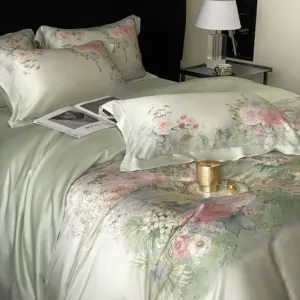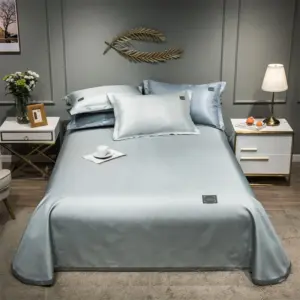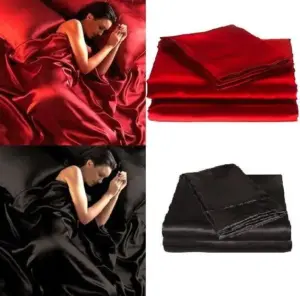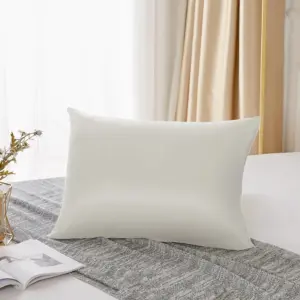The Science Behind Silk Pillowcases: How They Protect Your Hair
When it comes to hair care, what you sleep on matters just as much as what products you use. Silk pillowcases have moved beyond being merely a luxury bedroom accessory to become a scientifically-backed hair care solution with real benefits.
At the molecular level, silk fibers are fundamentally different from cotton. Silk is made of smooth protein fibers that create an incredibly even surface. Under a microscope, these fibers appear smooth and uniform, unlike cotton fibers which have rough, irregular surfaces with tiny “hooks” that can catch on hair strands.
This smooth structure is the foundation of silk’s hair-protective properties. The natural proteins in silk (fibroin and sericin) share similarities with the keratin protein structure in human hair, creating a harmonious relationship between the fabric and your locks. When your head moves across a silk pillowcase during sleep, the minimal friction allows hair to glide across the surface rather than getting caught and tugged.
Beyond friction reduction, silk offers two additional protective qualities. First, it’s naturally less absorbent than cotton, meaning it won’t pull moisture from your hair while you sleep. Second, silk helps regulate temperature, preventing the overheating that can cause scalp sweat and subsequent hair problems.
The quality of silk is measured in momme weight (similar to thread count in cotton), with 19-25 momme being the optimal range for hair benefits. This weight provides the perfect balance between smoothness and durability. Among silk varieties, Mulberry silk pillowcases stand as the premium standard, offering the finest, most uniform fibers for maximum hair protection.
Recent textile studies have quantified the difference in friction between silk and cotton, showing significantly lower friction coefficients for silk fabrics—directly correlating to less mechanical stress on hair strands during the 6-8 hours we typically spend with our heads on pillows each night.
Silk vs Cotton Pillowcases: A Comprehensive Comparison
To understand why silk makes such a difference for hair health, it helps to directly compare it with the most common alternative: cotton. These two materials interact with your hair in dramatically different ways during sleep.
| Factor | Silk Pillowcases | Cotton Pillowcases |
|---|---|---|
| Surface Texture | Extremely smooth (low friction coefficient) | Rough with microscopic “teeth” (high friction) |
| Moisture Absorption | Low absorption (retains hair’s natural oils) | High absorption (pulls moisture from hair) |
| Hair Cuticle Effect | Maintains smooth cuticle layer | Roughens and disrupts cuticle layer |
| Static Electricity | Minimal static buildup | Significant static generation |
| Temperature Regulation | Natural temperature balancing | Heat-trapping properties |
The texture difference between these materials creates the most noticeable impact. Cotton’s rough surface creates friction that forces hair cuticles to open and become raised—similar to rubbing your hair the wrong way. In contrast, silk’s smooth surface allows hair to slide without disrupting the cuticle layer, keeping it flat and smooth.
Moisture retention represents another crucial difference. Cotton is highly absorbent and pulls moisture from whatever touches it. This means it actively draws natural oils and moisturizers from your hair throughout the night. Silk, being protein-based rather than plant-based, has significantly lower absorbency and allows your hair to retain its essential moisture.
These differences become especially important for specific hair types. For fine or damaged hair, cotton’s roughness can cause immediate mechanical damage. For curly or textured hair, cotton creates frizz by disrupting curl patterns. For those with dry hair, cotton’s moisture-wicking properties compound existing dryness issues.
When examined under a microscope, hair strands that have spent the night on cotton often show raised cuticles and surface damage, while those from silk pillowcases maintain their smooth cuticle alignment—visual evidence of why many wake up with frizz and tangles after sleeping on cotton.
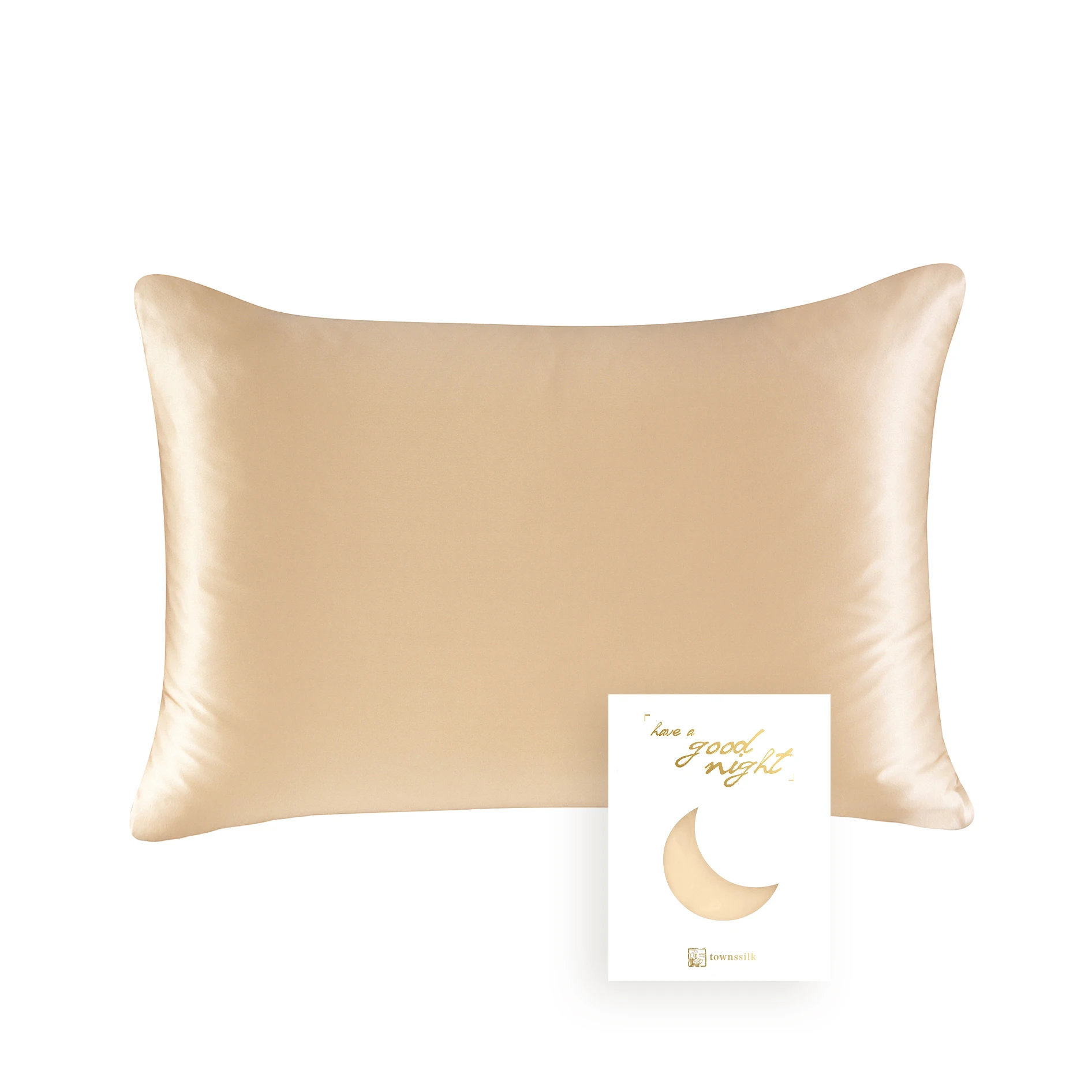
7 Key Hair Benefits of Using a Silk Pillowcase
1. Significantly Reduced Frizz and “Bed Head”
The smooth surface of silk creates minimal friction against your hair, preventing the rough interaction that raises hair cuticles and creates frizz. When hair cuticles remain flat and aligned, light reflects uniformly off the hair shaft, creating that coveted smooth, shiny appearance. Many users report a dramatic difference in morning frizz levels, with some able to skip morning styling entirely after switching to transformative silk pillowcases for sleep. This benefit becomes especially noticeable for those who struggle with persistent frizz issues.
2. Prevention of Hair Breakage and Split Ends
Every time hair catches or snags during sleep, tiny amounts of damage occur. Over time, this repeated stress leads to breakage and split ends. Silk’s frictionless surface reduces hair breakage significantly by eliminating the mechanical stress that occurs as you move during sleep. Hair strands, particularly when wet or weakened from coloring or heat styling, are especially vulnerable to this type of damage. By providing a gentle surface, silk helps preserve hair integrity and strength, potentially supporting length retention for those growing their hair.
3. Enhanced Hair Hydration and Moisture Retention
Unlike cotton which actively absorbs moisture, silk’s non-absorbent nature helps your hair maintain its natural oils and any applied hair products overnight. This preserved hydration translates to improved hair elasticity, which means better bounce, movement, and resistance to breakage. For those who use leave-in conditioners or overnight treatments, silk allows these products to work on your hair rather than being absorbed into your pillowcase, maximizing their effectiveness and your investment in hair care products.
4. Minimized Hair Tangles and Knots
The smooth, friction-free surface of silk allows hair strands to slide across the pillowcase without catching or intertwining. This significantly reduces the formation of knots and tangles overnight, especially beneficial for those with long hair or curly textures. Less tangling means less aggressive brushing in the morning, which in turn means less breakage in a positive cycle of hair protection. Many users report dramatically shorter detangling time after switching to silk pillowcases, saving precious minutes in morning routines.
5. Preservation of Hairstyles and Blowouts
For those who invest time or money in hairstyling, silk helps maintain your style significantly longer. Whether you’ve spent time creating perfect curls, paid for a professional blowout, or carefully styled your bangs, silk pillowcases prevent the crushing and friction that typically destroy these styles overnight. This preservation means less need for heat styling tools in the morning, creating another layer of protection against heat damage while extending the life of your styling efforts.
6. Reduced Static Electricity and Flyaways
Silk’s natural protein structure helps regulate electrical charge during sleep, significantly reducing the static electricity that causes flyaway hairs. This benefit becomes particularly noticeable in dry climates or winter months when static problems typically worsen. Less static means smoother, more manageable hair that stays in place without the need for anti-static products. This natural control of electrical charge helps maintain hair’s natural position and flow without artificial intervention.
7. Temperature Regulation for Scalp Health
Silk naturally regulates temperature, creating a consistently comfortable sleeping surface regardless of the season. This thermoregulation helps prevent excessive sweating at the scalp, which can disrupt the scalp’s natural balance and potentially affect hair follicle health. A balanced scalp environment supports healthy hair growth cycles, potentially benefiting those concerned with hair thinning or scalp conditions. The breathable nature of silk makes it particularly valuable for hot sleepers or those in warm climates.
Hair experts and dermatologists increasingly recommend silk pillowcases as part of a comprehensive hair care regimen, with some studies showing up to 43% reduction in friction-based damage compared to traditional cotton pillowcases. While individual results vary based on hair type and condition, most users notice improvements in hair health within 2-4 weeks of consistent use.
Hair Type-Specific Benefits: Finding Your Perfect Match
While silk pillowcases benefit all hair types, their advantages manifest differently depending on your specific hair characteristics. Understanding how silk works with your particular hair type can help you maximize its benefits.
Curly and Textured Hair
Curly and textured hair types benefit tremendously from silk pillowcases. The lack of friction helps preserve curl definition and pattern overnight, reducing the “crushed curl” effect common with cotton. Curl patterns remain more intact, requiring less refreshing or restyling in the morning. Additionally, silk pillowcases protect curly hair from the moisture loss that often leads to dryness and frizz in these naturally drier hair types. Many curly hair specialists recommend pairing silk pillowcases with “pineappling” (loosely gathering hair at the crown) for maximum curl preservation.
Fine and Thin Hair
Fine hair is particularly vulnerable to damage due to its smaller diameter and lower tensile strength. Silk’s gentle surface prevents the pulling and tugging that can lead to breakage in this delicate hair type. Morning volume is often better preserved as well, since silk doesn’t flatten hair the way cotton can. For those experiencing thinning, this gentler environment reduces stress on vulnerable follicles and existing strands. Many users with fine hair report reduced hair shedding on their pillowcases after switching to silk.
Color-Treated Hair
Chemically processed hair has a compromised cuticle layer that makes it especially susceptible to damage. Silk helps maintain color vibrancy in two ways: by preventing the friction that can wear away color molecules and by preserving the moisture that keeps color locked in. The result is potentially longer-lasting color and less frequent need for touch-ups. Colorists often suggest silk pillowcases as part of a color-preservation routine, particularly for vibrant or fashion colors that tend to fade quickly.
Long Hair
The longer the hair, the more opportunity for tangling and breakage. Silk provides a smooth surface for long hair to spread out without catching, significantly reducing morning knots and tangles. This means less brushing and detangling, which in turn means less breakage. Those with hair past shoulder length often notice the most dramatic morning difference when switching to silk, sometimes reducing detangling time by half or more.
Damaged or Brittle Hair
Hair that’s already compromised from heat styling, chemical treatments, or environmental damage needs special protection. Silk provides the gentlest possible environment for fragile strands, preventing further damage while allowing repair products to work more effectively overnight. For those working to restore damaged hair, silk pillowcases form an essential part of a rehabilitation routine, complementing strengthening treatments and reducing further stress on vulnerable strands.
Aging Hair
As we age, hair typically becomes drier, more brittle, and sometimes thinner. Silk addresses all these concerns by preserving natural moisture, reducing breakage, and creating minimal stress on follicles. The protein structure of silk also complements the changing protein needs of aging hair. Many users report that silk pillowcases help maintain hair density and quality during aging transitions, working alongside appropriate hair care products for mature hair.
Hair professionals consistently observe that clients who sleep on silk experience better style longevity, reduced damage patterns, and improved overall hair health across all hair types, making it one of the few universal recommendations that benefits everyone regardless of specific hair concerns.
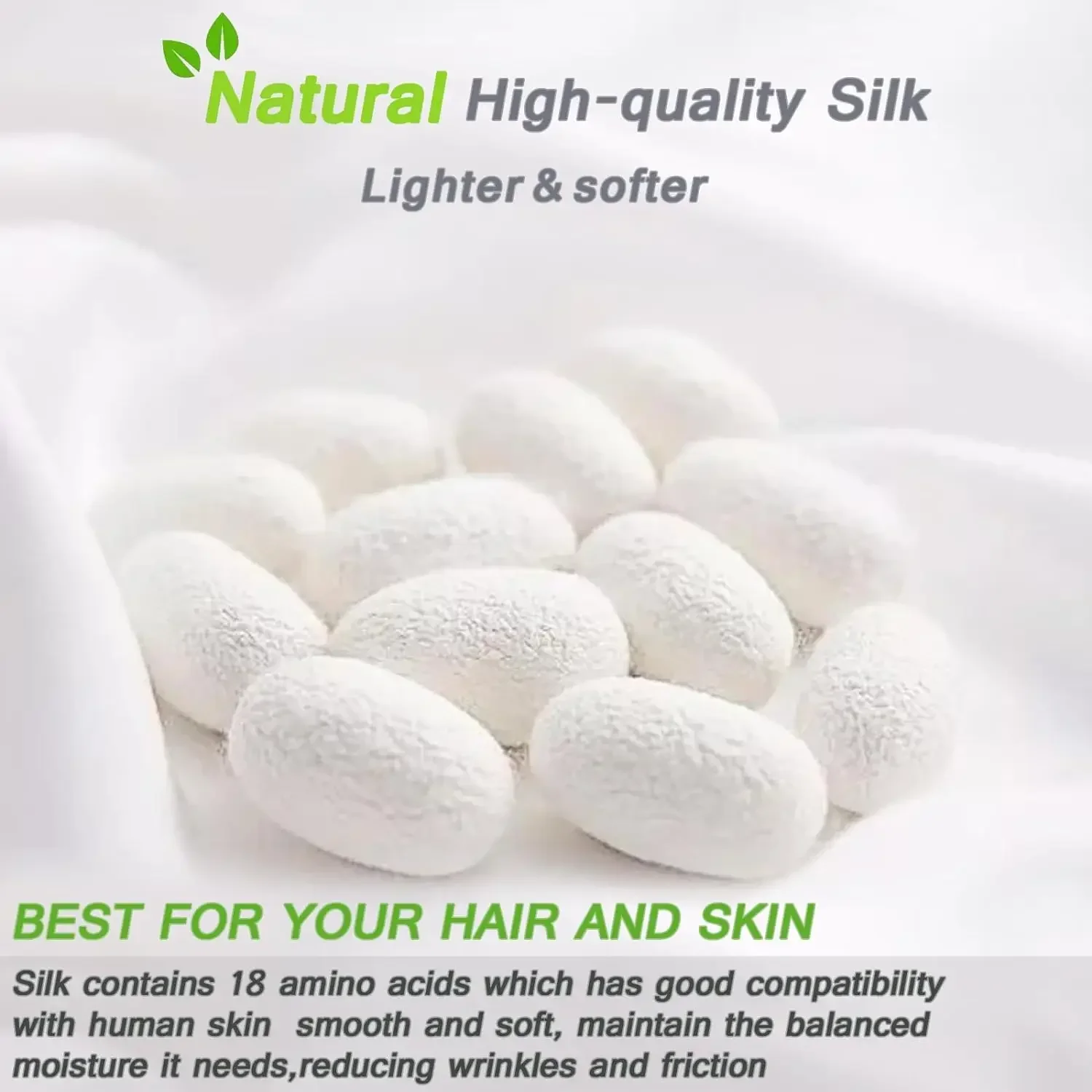
Beyond Hair: Complementary Skin and Health Benefits
While hair benefits drive many to choose silk pillowcases, they offer impressive advantages for skin and overall health that complement their hair-protective properties.
Silk’s smooth surface creates less friction against facial skin, potentially reducing the formation of sleep creases and wrinkles over time. Unlike cotton which can drag and pull delicate facial skin, silk allows the skin to glide as you move during sleep. This gentler interaction helps maintain skin elasticity and may support anti-aging efforts, particularly for side and stomach sleepers.
For skincare enthusiasts, silk’s lower absorbency helps nighttime products stay on your face rather than transferring to your pillowcase. This means expensive serums and moisturizers can work through the night as intended, maximizing their effectiveness. Many dermatologists recommend silk pillowcases for this specific benefit, seeing them as an extension of a proper skincare routine.
The hypoallergenic properties of silk fabric provide additional health benefits, particularly for those with sensitivities:
- Naturally resistant to dust mites, mold, and many allergens
- Contains natural proteins that discourage bacterial growth
- Free from the chemical residues often found in cotton processing
- Provides a cleaner sleeping surface for sensitive individuals
Silk also offers temperature-regulating properties that balance hot and cool sleeping temperatures, potentially improving sleep quality for those sensitive to temperature fluctuations. Many users report more comfortable sleep throughout changing seasons, without the overheating common with synthetic materials or the cold dampness that can occur with cotton.
These complementary benefits create a holistic wellness approach—while your hair is being protected, your skin and overall sleep experience improve simultaneously, making silk pillowcases a multifunctional wellness investment rather than simply a hair care product.
Choosing the Best Silk Pillowcase: Quality Factors That Matter
Not all silk pillowcases deliver the same benefits. Understanding quality indicators ensures you select a pillowcase that provides maximum hair protection and longevity.
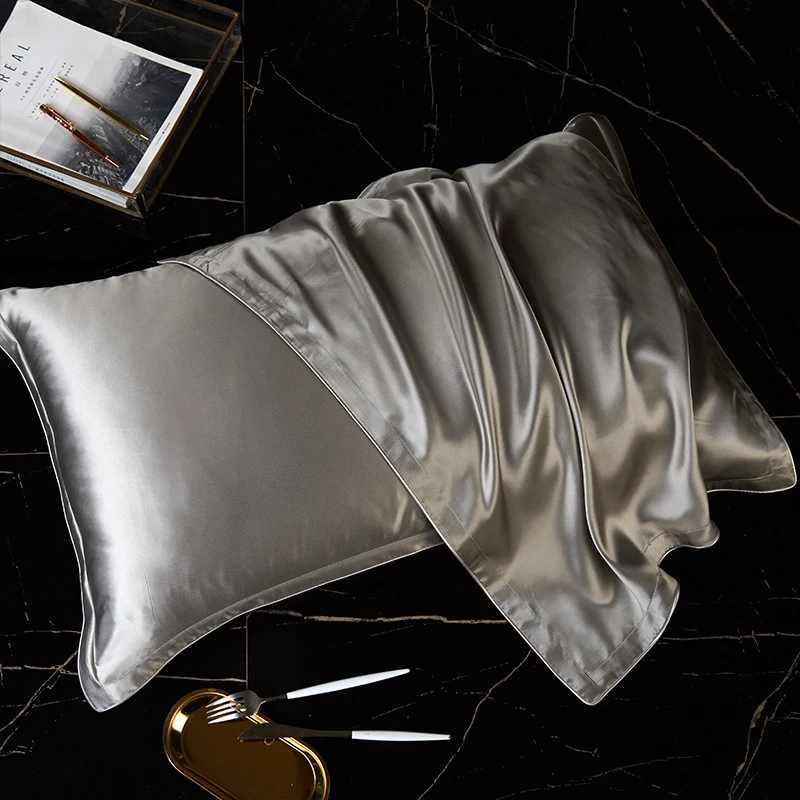
The type of silk used directly impacts performance. Mulberry silk stands as the gold standard, produced from silkworms fed exclusively on mulberry leaves, resulting in longer, stronger, more uniform fibers than other varieties. This translates to a smoother surface and better durability, directly affecting how well the pillowcase protects your hair.
Momme weight (similar to thread count) indicates silk density and durability. While understanding silk momme weight can seem technical, the optimal range for pillowcases falls between 19-25 momme:
* Below 19 momme: May be too thin, with shorter lifespan and less protective benefits
* 19-22 momme: Good balance of softness and durability for most users
* 22-25 momme: Premium thickness with maximum durability and protection
* Above 25 momme: Extremely durable but may feel slightly less soft and flowing
The grade of silk (ranging from A to 6A) indicates fiber quality and uniformity. Higher grades mean fewer imperfections and inconsistencies:
* Grade A: Basic acceptable quality
* Grade 3A-4A: Good quality for everyday use
* Grade 5A-6A: Premium quality with superior smoothness and luster
Manufacturing details significantly impact performance and longevity. Look for:
* Charmeuse weave: Creates the smooth surface needed for hair protection
* Zippered closure: Prevents pillowcase slippage during sleep
* French seams or piping: Indicates attention to detail and durability
* Hand-finished edges: Offers superior durability compared to machine-finished
Certifications provide assurance of quality and safety:
* Oeko-Tex Standard 100: Guarantees the silk is free from harmful substances
* BSCI certification: Ensures ethical manufacturing practices
While price ranges vary widely, quality silk pillowcases typically cost $50-$150, with price differences reflecting momme weight, grade, finishing details, and brand reputation. When comparing options, focus on these quality factors rather than simply choosing by price point or appearance.
Standard size silk pillowcases offer the most versatile fit for most pillows, though king and queen sizes are also widely available for larger pillows. Some premium brands offer envelope closures rather than zippers, which can provide a smooth edge that prevents hair catching.
Caring for Your Silk Pillowcase: Maintenance for Lasting Benefits
Proper care ensures your silk pillowcase continues delivering hair benefits for years rather than months. Following these guidelines preserves both the aesthetic quality and protective properties.
For washing, always use cold or lukewarm water (never hot) and gentle, pH-neutral detergents specifically formulated for delicates. Harsh detergents with enzymes or bleach will damage silk proteins and diminish the smooth surface that protects your hair. Hand washing provides the gentlest option, but if using a machine:
- Place the pillowcase in a mesh laundry bag to prevent snagging
- Select the delicate/silk cycle with cold water
- Use minimal detergent (about half the normal amount)
- Avoid fabric softeners which can coat silk fibers and reduce breathability
For drying, never wring silk as this damages the fibers. Instead:
* Gently press water out between towels
* Lay flat or hang to air dry away from direct sunlight
* If ironing is needed, use the lowest silk setting with the pillowcase inside-out
Common care mistakes to avoid include:
* Using hot water (damages protein fibers)
* Machine drying (causes shrinkage and fiber damage)
* Using bleach or strong detergents (breaks down silk proteins)
* Exposing to direct sunlight for extended periods (fades color and weakens fibers)
With proper care, expect your silk pillowcase to last 1-2 years with nightly use before showing signs of wear that might diminish its hair benefits. Rotating between two pillowcases extends their lifespan while ensuring you always have one clean. Wash every 7-10 days or more frequently if you apply products to your hair before bed.
Watch for signs that it’s time to replace your pillowcase, including:
* Visible thinning in high-contact areas
* Loss of shine and smoothness
* Pilling or roughness that can be felt when running your hand across the surface
This maintenance routine, while requiring some special care, ensures your investment continues protecting your hair for the maximum possible lifespan.
Common Misconceptions: Setting Realistic Expectations
To fully appreciate what silk pillowcases can do for your hair, it’s important to address common misconceptions and set realistic expectations about their benefits.
Myth: Silk pillowcases will completely eliminate all hair breakage.
Fact: While silk significantly reduces friction-based breakage, it cannot prevent breakage caused by other factors like nutritional deficiencies, heat styling damage, or chemical processing. Think of silk pillowcases as one important tool in your hair protection arsenal, not a miracle solution.
Myth: Silk pillowcases replace the need for proper hair care routines.
Fact: Silk complements good hair care practices but doesn’t replace them. Regular trims, appropriate products, and gentle handling remain essential for optimal hair health. Silk provides nighttime protection that enhances your existing routine.
Myth: All hair types will see dramatic results overnight.
Fact: While some benefits like reduced bed head are immediately noticeable, others develop gradually. Those with damaged, color-treated, or textured hair typically see the most dramatic improvements, while those with already healthy, resilient hair might notice more subtle changes.
Myth: Satin pillowcases provide identical benefits to silk.
Fact: Though satin pillowcases offer some friction reduction, they lack silk’s protein structure, moisture-regulating properties, and hypoallergenic qualities. Synthetic satin can also generate static and doesn’t breathe as well as natural silk.
Myth: Any product labeled “silk” will provide the same benefits.
Fact: The market contains many silk-blend or faux silk products that don’t deliver the same benefits. Pure mulberry silk with appropriate momme weight (19-25) provides the optimal combination of properties for hair protection.
Myth: Silk pillowcases must be dry cleaned.
Fact: Most high-quality silk pillowcases can be hand washed or machine washed on gentle cycles with appropriate detergents, making them practical for regular use.
Realistically, you can expect to see noticeably less morning frizz and tangling within the first few uses. Reduced breakage and improved moisture retention typically become apparent within 2-3 weeks of consistent use. Long-term benefits like improved hair strength and manageability generally develop over 1-2 months as your hair experiences less nightly damage.
Silk pillowcases help hair health most effectively when used as part of a comprehensive approach to hair care that includes proper hydration, nutrition, gentle handling, and appropriate products for your specific hair type.
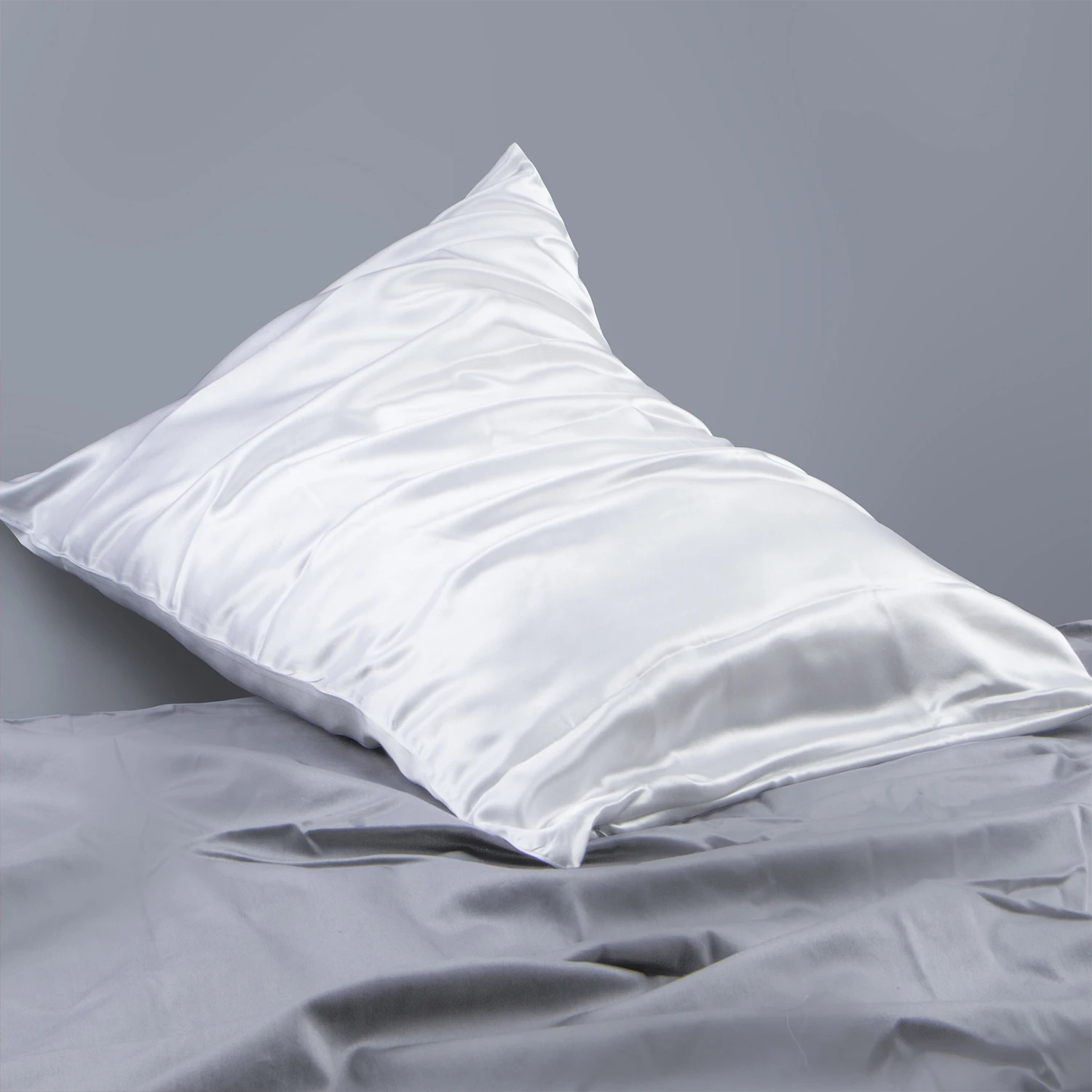
Frequently Asked Questions About Silk Pillowcases for Hair
What makes a pillowcase “pure silk” versus a “silk blend”?
Pure silk pillowcases are made entirely from silk fibers, typically from the Bombyx mori (mulberry silkworm). Silk blends combine silk with other materials like cotton or synthetic fibers, which dilutes the benefits. For maximum hair protection, look for products labeled “100% mulberry silk” rather than simply “silk” or “silk blend,” which may contain as little as 10% actual silk.
Are satin pillowcases just as good as silk for hair?
While satin pillowcases do offer some friction reduction, they don’t provide the same benefits as real silk. Satin is a weave pattern typically made from polyester or other synthetic materials that lacks silk’s protein structure and moisture-regulating properties. Synthetic satin can also generate static electricity and doesn’t breathe as well as natural silk, potentially causing sweating that affects both hair and skin.
Do silk pillowcases really prevent hair breakage?
Yes, silk pillowcases significantly reduce mechanical breakage caused by friction during sleep. Studies show they create substantially less friction than cotton pillowcases, which directly correlates to reduced breakage, particularly for fragile or processed hair types. However, they cannot prevent breakage caused by other factors like nutritional deficiencies or heat styling damage.
Which hair types benefit most from silk pillowcases?
While all hair types benefit, those with curly, textured, fine, damaged, or color-treated hair typically see the most dramatic improvements. Curly hair maintains better definition, fine hair experiences less breakage, and color-treated hair often maintains vibrancy longer due to reduced friction and better moisture retention.
How often should I wash my silk pillowcase?
For optimal hair and skin benefits, wash your silk pillowcase every 7-10 days, or more frequently if you apply products to your hair or face before bed. Regular washing removes product buildup, oils, and skin cells that can affect both the pillowcase’s performance and its interaction with your hair.
Will a silk pillowcase help with hair loss?
Silk pillowcases can help reduce breakage-related hair loss by minimizing friction and mechanical damage. However, they cannot address hair loss caused by hormonal factors, medications, or medical conditions. For those experiencing significant hair loss, silk pillowcases work best as part of a comprehensive approach recommended by a dermatologist or trichologist.
Can children or teens benefit from silk pillowcases too?
Yes, children and teenagers can benefit significantly, especially those with textured hair types prone to tangling, or active sleepers who move frequently during the night. Young people with long hair or who are growing their hair out may experience less tangles and breakage, making morning routines easier and reducing hair-related conflicts.
Silk sheet and pillowcase sets offer comprehensive benefits for those wanting to extend silk’s advantages beyond just the pillowcase. Complete sets provide a consistent sleep surface that protects both hair and skin from friction throughout the night.
Eucalyptus Silk Bedding Sets, Eucalyptus Silk Sheets
Price range: $360.24 through $393.60 Select options This product has multiple variants. The options may be chosen on the product pageGrey Silk Sheets, Silk Sheet and Pillowcase Set
Price range: $88.20 through $146.64 Select options This product has multiple variants. The options may be chosen on the product page- Price range: $267.82 through $306.55 Select options This product has multiple variants. The options may be chosen on the product page
Bamboo Silk Sheets, Cooling Silk Sheets
Price range: $130.76 through $177.80 Select options This product has multiple variants. The options may be chosen on the product pageBamboo Silk Sheets, Queen Size Silk Fitted Sheet
Price range: $230.24 through $297.88 Select options This product has multiple variants. The options may be chosen on the product pageKing Size Silk Pillowcases, Mulberry Silk Pillowcases, Queen Size Silk Pillowcases
Price range: $94.96 through $121.56 Select options This product has multiple variants. The options may be chosen on the product page
How long do silk pillowcases typically last?
With proper care, high-quality silk pillowcases typically last 1-2 years of regular nightly use before showing signs of wear that might diminish their hair benefits. Rotating between multiple pillowcases extends their lifespan while ensuring you always have a clean one available.
Silk Alternatives: How Do They Compare for Hair Protection?
If traditional silk doesn’t fit your lifestyle or budget, several alternatives offer varying degrees of hair protection benefits.
| Material | Friction Reduction | Moisture Retention | Durability | Price Range | Best For |
|---|---|---|---|---|---|
| Mulberry Silk | Excellent | Excellent | Good with proper care | $$$-$$$$ | Maximum hair protection |
| Satin (Polyester) | Good | Poor | Very good | $-$$ | Budget-conscious consumers |
| Bamboo Silk | Very good | Good | Excellent | $$-$$$ | Eco-conscious consumers |
| Silk-Cotton Blend | Good | Moderate | Very good | $$-$$$ | Easier maintenance |
| Copper-Infused | Good | Moderate | Very good | $$$-$$$$ | Anti-microbial concerns |
| High Thread Count Cotton | Moderate | Poor | Excellent | $$-$$$ | Minimal maintenance |
Satin pillowcases (typically polyester-based) offer the most accessible alternative, providing good friction reduction at a fraction of silk’s cost. However, they lack silk’s moisture-retaining properties and can generate static electricity that affects hair. They’re best for those primarily concerned with reducing tangles and frizz on a tight budget.
Bamboo silk (made from bamboo fibers) offers excellent smoothness with superior durability and easier care requirements. It provides good moisture balance and has natural temperature-regulating properties, making it an excellent eco-friendly alternative that still delivers many of silk’s benefits for hair.
Silk-blend fabrics (usually silk mixed with cotton) offer a compromise between pure silk and traditional cotton. They provide moderate friction reduction and some moisture benefits while being more durable and easier to maintain than pure silk. These blends work well for those who want silk benefits without special care requirements.
For those seeking alternatives for ethical reasons, vegan silk bedding options have advanced significantly in recent years. These typically use plant-based fibers engineered to mimic silk’s smooth texture and moisture properties without animal products.
The best pillowcase materials for healthy hair balance several factors including your hair type, budget, maintenance preferences, and ethical considerations. While pure mulberry silk remains the gold standard for hair protection, these alternatives can still offer significant improvements over standard cotton.
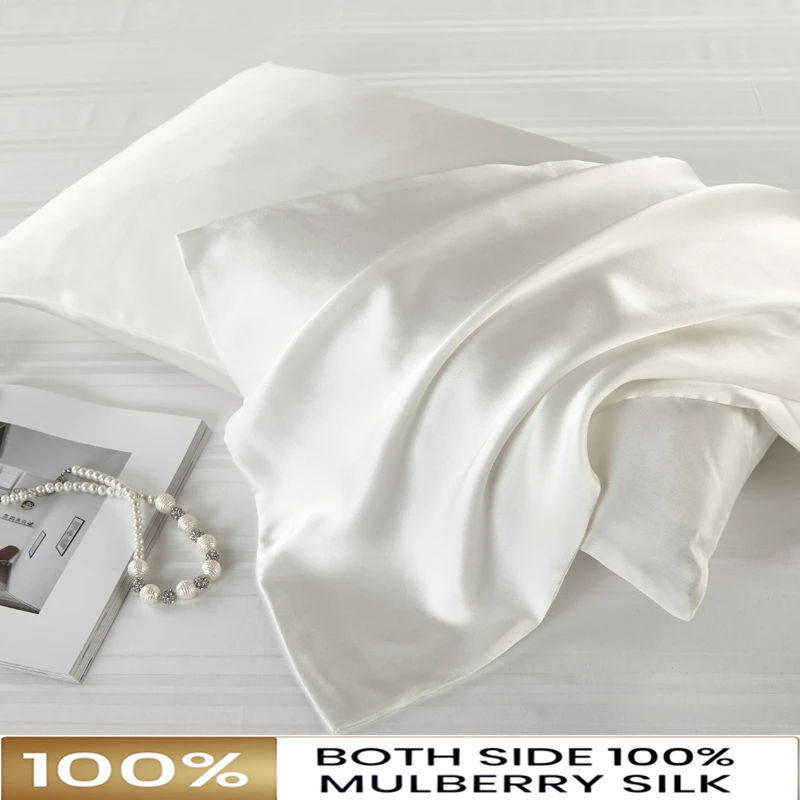
Real Results: What to Expect and When
Understanding the timeline for silk pillowcase benefits helps set realistic expectations and allows you to notice improvements as they develop.
Immediate Benefits (First Night)
* Noticeably less “bed head” and morning frizz
* Reduced flattening of hairstyles
* Preserved blowouts or special styling
* Less visible sleep creases in hair
Short-Term Benefits (1-2 Weeks)
* Significantly fewer tangles and knots
* Reduced morning styling time
* Less hair found on pillowcase or brush
* Improved shine as cuticles stay smoother
* More consistent hair texture throughout the day
Long-Term Benefits (1+ Months)
* Cumulative reduction in breakage and split ends
* Improved overall hair condition and strength
* Better retention of hair color and treatments
* Potentially longer hair growth due to less breakage
* More consistent hair quality regardless of weather conditions
Several factors can influence how quickly and dramatically you’ll notice results. Your hair type plays a significant role—those with fine, fragile, curly, or damaged hair typically see more immediate and dramatic improvements than those with naturally resilient hair types. Your sleeping habits also matter; active sleepers who move frequently during the night often notice more dramatic differences than still sleepers.
Your existing hair care routine impacts results as well. Those using quality products and gentle handling techniques will find silk pillowcases enhance their existing routine. However, if your hair is damaged from heat styling, chemical processing, or harsh products, silk pillowcases can only minimize additional damage, not reverse existing issues.
To maximize benefits and track your progress, consider taking “before” photos of your morning hair and making notes about styling time, frizz levels, and breakage. This creates a baseline for comparison as you continue using your silk pillowcase. Many users find keeping this simple hair journal helps them recognize the sometimes subtle improvements that develop over time.
With consistent use, most people experience healthier hair with silk pillowcases as part of their regular hair care routine, with benefits that compound over time as hair gradually experiences less nightly damage.


